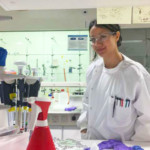Enlarge / False-colored scanning electron micrograph of multiple S. elongatus cyanobacteria (green) with a single rat heart muscle cell (red). (credit: Cohen et al. ) For the faint of heart, a microbial flash mob might just do the trick. A direct injection of photosynthetic bacteria—plus a little light— provided cellular life-support to the weak, blood-starved hearts of rats suffering simulated heart attacks. The bacterial jolt supplied much-needed oxygen to the gasping tissue and prevented long-term damage, Stanford researchers report this week in Science Advances . In fact, after a short recovery period the treated rodents had a 30-percent boost in heart function compared with control animals. “In humans, an increase of this magnitude would have profound clinical implications, likely representing the difference between a healthy patient and one suffering from heart failure,” the authors conclude. They’re hopeful that one day the microbial menders could be used to help human heart attack patients and those undergoing heart surgery or heart transplants. There are some tall hurdles to get to those goals, the authors admit, but the results so far show promise. Read 10 remaining paragraphs | Comments
Continued here:
In dying, blood-starved heart, bacteria injections offer cellular life support







